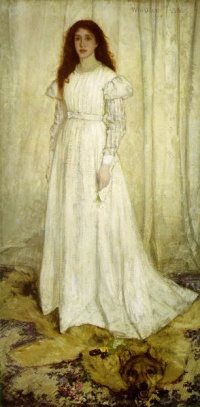White people
From The Art and Popular Culture Encyclopedia
(Difference between revisions)
| Revision as of 12:37, 9 February 2013 Jahsonic (Talk | contribs) ← Previous diff |
Revision as of 21:48, 3 October 2013 Jahsonic (Talk | contribs) Next diff → |
||
| Line 3: | Line 3: | ||
| {{Template}} | {{Template}} | ||
| - | The term "'''white people'''" (also "'''whites'''" or "'''white race'''") has been defined as "being a member of a group or [[race]] characterized by light pigmentation of the skin" and "to a [[human]] group having light-colored skin, especially of [[Europe]]an ancestry." | ||
| - | In the context of describing certain humans, the term ''[[white]]'' does not refer to a [[Human skin color|skin color]] that is literally white; people described as white can have a variety of light skin colors. The term ''white people'' functions as a [[Color metaphors for race|color metaphor for race]]; one that emerged from a racialized, [[Eurocentrism|European historical context]]. | + | The definition of "white person" differs according to geographical and historical context. Various [[social construction]]s of ''whiteness'' have had implications in terms of national identity, [[consanguinity]], [[Public policy (law)|public policy]], [[religion]], [[census|population statistics]], [[racial segregation]], [[affirmative action]], [[eugenics]], racial [[marginalization]] and [[racial quota]]s. The concept has been applied with varying degrees of formality and internal consistency in disciplines including [[sociology]], [[politics]], [[genetics]], [[biology]], [[medicine]], [[biomedicine]], [[language]], [[culture]], and [[law]]. |
| == See == | == See == | ||
| *[[Blue-eyed soul]] | *[[Blue-eyed soul]] | ||
Revision as of 21:48, 3 October 2013

This reproduction of a 1900 minstrel show poster, originally published by the Strobridge Litho Co., shows the transformation from white to "black".

James Whistler's painting Symphony in White, No. 1: The White Girl (1862) caused controversy when exhibited in London and, later, at the Salon des Refusés in Paris. The painting epitomizes his theory that art should essentially be concerned with the beautiful arrangement of colors in harmony, not with the accurate portrayal of the natural world.
|
Related e |
|
Featured: |
The definition of "white person" differs according to geographical and historical context. Various social constructions of whiteness have had implications in terms of national identity, consanguinity, public policy, religion, population statistics, racial segregation, affirmative action, eugenics, racial marginalization and racial quotas. The concept has been applied with varying degrees of formality and internal consistency in disciplines including sociology, politics, genetics, biology, medicine, biomedicine, language, culture, and law.
See
- Blue-eyed soul
- Stereotypes of whites
- The White Goddess
- Caucasian race
- White guilt
- White American
- White slavery
- White men
- White women
Unless indicated otherwise, the text in this article is either based on Wikipedia article "White people" or another language Wikipedia page thereof used under the terms of the GNU Free Documentation License; or on research by Jahsonic and friends. See Art and Popular Culture's copyright notice.

